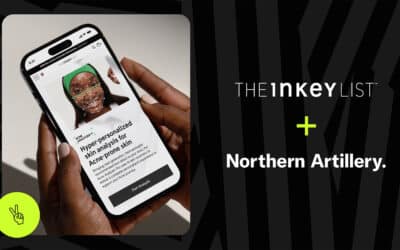Real time marketing, the practise of hijacking high profile events with relevant content, is making waves, with brands like Oreo reaping the benefits from creative content at the Super Bowl and Daytona 500, writes Alex Craven, chief executive of Bloom.
Oreo’s timely intervention during the power cut at the Super Bowl, when it tweeted “You can still dunk in the dark”, generated more than 16,000 retweets and over 6,100 favourites on Twitter, showed that real-time marketing can deliver big results.
Real time marketing requires a team of creative content developers to be available and reacting to events and trends. When it works the brand can win big and when it doesn’t it can open up a social media backlash because of the interruptive nature of this kind of marketing.
When Twitter memes rise and fall in a few hours it makes sense for brands to react quickly if they are to benefit. It requires an element of bravery to put aside lengthy corporate approvals and trust creative teams to use their own judgement.
For brands to have a voice in real time marketing it is not enough to simply churn out content, it must be designed for sharing. Great ideas should be brought to life in bite sized chunks, ready to be consumed and shared in seconds.
The growth of infographics, gifs and, more recently Vine, illustrates that visual content is the ideal medium for social newsfeeds and mobile is based on this core understanding of why people like, share and engage around content.
Real time marketing is much more intensive and needs plenty of resource, trust between agency and brand and bravery, in equal measure. The ability to monitor and make sense of lots of information in real time is also essential.
Only when a trend is understood can the brand be inserted in the correct context. Much like a great comedian, real time marketing needs a great sense of timing, an understanding of the audience and cultural references that enable humour to be delivered without putting your foot in it.
Perhaps the earliest example of real time marketing was the stratospherically successful Old Spice Campaign. The campaign broke in February 2010 with a spot during the Super Bowl, numerous iterations were rolled out by the brand and fuelled by social media feedback.
The campaign set the standard with 236 million YouTube Views, 80,000 Twitter followers in two days and a sales figure increase of 107 per cent.
A real time marketing campaign will operate like a newsroom and share a lot of skills with a traditional PR agency. A keen eye for a trend and a creative hook to get people talking and sharing are key skills for any marketing agency.
Brands need to adopt an agile approach to content development that enables a prolific production rate and an acceptance that it won’t have a 100 per cent hit rate. The more campaigns put the customer at the heart of everything they do, the higher their success rate.
It is one thing to create a multi-disciplinary team for a special event or announcement but quite another to sustain this over long periods. The Old Spice videos stretched over a couple of weeks and it would have been very costly to deliver that campaign. Agencies and brands will have to adopt new ways of working and business models to deliver this kind of campaign.
Taco Bell made an impact at the recent South by Southwest (SXSW) conference. The brand’s campaign relied on a camera app on Feedthebeat.com that gave fans images from cameras, Instagram posts, Vine and tweets from fans using the hashtag #feedthebeat. Taco Bell used the footage to form a fan-made film.
It is early days for this form of marketing and brands are feeling their way. I feel they should be applauded for embracing the speed at which marketing now needs to move. Inevitably, some of the ideas will fall flat but that must be part of the game.
If brands don’t get onboard with this kind of marketing they risk missing out on a powerful way to engage an audience. The benefits span the marketing spectrum from brand awareness to SEO.
Real time marketing is happening, now, and it will be early adopters who make the biggest gains. It can prove to be hard miles for a brand to kick start a conversation with consumers.
Consumers have conversations with each other all the time and brands can be a part of those conversations. The brands that do it best, add to the conversation.
Inevitably social media is constantly pushing the boundaries and changing how marketers reach consumers and expectations of how much control brands have over the message.
Marketers live in interesting times, a more fluid and less centralised approach to campaigns are required. Success depends on having a shared laser focus on the brand and its values, this will enable a faster, leaner and more efficient approach to marketing.
Alex Craven is the managing director of the Leeds-based Bloom Agency.








